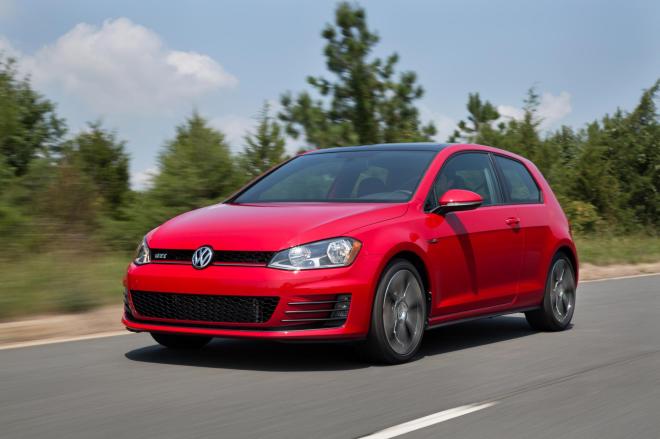
Herndon, VA — Volkswagen of America, Inc. is proud to announce today that the 2015 Golf GTI has won Autoweek’s annual “Best of the Best”/Car award. The all-new Golf GTI was evaluated against every new or significantly updated model throughout the year, prior to competing against three other finalists for the overall honor. In winning, judges praised the “hot-hatch” for its thoughtful design, superb handling, quality and value.
“Featuring Volkswagen’s improved 2.0-liter turbo four-cylinder engine and a choice of two great gearboxes, the Golf GTI is an approachable, practical performance car,” said Dutch Mandel, Publisher, Autoweek. “The car satisfies on every level and the new chassis makes it a blast to drive on the track or the street. It’s a car any driver can have fun with.”
“Our team is very excited to be named the Autoweek “Best of the Best”/Car for 2015,” said Michael Horn, president and CEO, Volkswagen Group of America, Inc. “It’s an honor to receive this award from a publication whose readership has the same kind of passion about driving and performance as we have at Volkswagen.”
Autoweek selects its annual “Best of the Best” based on performance, economy, fit and finish, design, value, and personal taste as well as statistical data and consumer conversation. Alongside the Golf GTI, finalists for the 2015 Car award included the Alfa Romeo 4C, Mercedes-Benz C-Class and Ford Mustang.
Equipped with a sophisticated EA888 2.0-liter turbocharged and direct-injection TSI® engine, the 2015 Golf GTI delivers 210 horsepower and 258 pound-feet of torque—an increase of 10 hp and 51 lb-ft from the previous generation. The optional Performance Package ups the ante with 220 horsepower, a torque-sensing electronically-controlled limited-slip differential and larger brakes.
Despite increased horsepower and torque, the new Golf GTI is also more fuel efficient than its predecessor. When equipped with the six-speed manual transmission, the Golf GTI records an EPA estimated fuel economy rating of 25 mpg in the city and 34 mpg on the highway—a 4 mpg city and 3 mpg highway improvement from the previous-generation GTI.
Thanks to Volkswagen’s versatile modular transverse matrix (MQB) vehicle platform, the 2015 Golf GTI retains the classic design cues of the Mk1 and Mk4 models, while gaining a more upscale appearance and added utility, including increased cabin and trunk space. Pricing for the all-new Golf GTI starts at $24,395 for the entry-level S trim in two-door form with the six-speed manual transmission.
Full coverage of Autoweek’s 2015 “Best of the Best” awards can be found at http://www.autoweek.com/best, the December 22 issue of the magazine or #autoweekbest.








